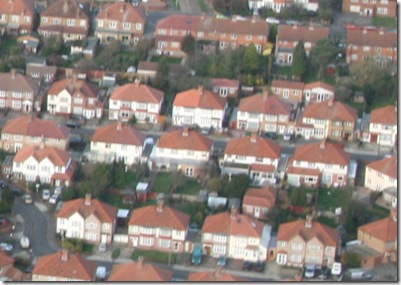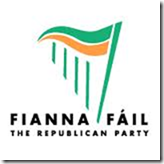 Ireland boasted 30,000 millionaires in 2006 and the number of millionaires was predicted to exceed 100,000! The average wealth per person in Ireland, €148,130 per person that year was greater than the average wealth per person in the United Kingdom, United States, Italy, France, Germany and Canada.
Ireland boasted 30,000 millionaires in 2006 and the number of millionaires was predicted to exceed 100,000! The average wealth per person in Ireland, €148,130 per person that year was greater than the average wealth per person in the United Kingdom, United States, Italy, France, Germany and Canada.
That is how Bank of Ireland viewed Ireland on 10 July 2006, a year in which the members of the Court were paid remuneration of over €5 million but increased to €10.23 million the following year because we were all so invincibly wealthy. The report was published 10 days prior to the shareholders annual general meeting
'A key defining characteristic of Ireland’s wealth is that it is first generational by nature (peasants were, in other word, wearing shoes for the first time and could afford a toothbrush). with the vast bulk of our wealth having been created in the past ten years. The report highlights that much of this wealth has been created through gains in property investment and through a willingness to borrow to invest further. It has been entrepreneurial and more risk orientated than many other developed countries where inheritance features more prominently
The current allocation of Irish wealth to equities and cash, by contrast, is less than any of the other countries in the report. 'However, we (Bank of Ireland 10 days before the 2006 AGM) predict that this will change as property price increases move back to more realistic levels and an ageing population may act as catalysts to create growing interest in diversification into other assets, primarily investment and pension funds. As wealth grows and matures, the benefits of diversification become compelling and an increasing amount of this wealth will be allocated to other assets’. This is a natural evolution as Ireland's wealth matures and individuals seek to protect their gains and transfer wealth to the next generation'
'The growth in wealth in the Irish economy has been astounding, (oh shucks!) with net wealth growing by 350% in 10 years. This is after taking into account the level of household debt in the economy and this highlights the rude health of Irish household's finances. We expect that net assets will grow to over €1.2 trillion by 2015, an increase of 80% in the coming decade.'
'Much has been made of the level of indebtedness in the Irish economy, with the pace of growth in debt much higher than in many other countries. However, liabilities as a percentage of total assets have only now reached international averages. While debt as a % of disposable income has increased from 89% to 140% in the last five years, the level of wealth provides an enormous cushion to borrowers (and our borrowers continue to be breast fed until their mothers reach 75 years of ages). Neither the absolute level of borrowing nor the level of borrowing relative to overall wealth are ahead of international norms indeed, we have come from significantly behind other developed countries. What is really interesting is that Irish investors have used much of this borrowing to leverage their positions in property, which, in turn, has been the engine for growth.'
Fears about rising debt levels are overstated as Irish investors leverage assets to secure further growth
This report was based on a survey of the top 8 leading OECD nations, Ireland is ranked the second wealthiest, behind Japan and ahead of the UK, US, Italy, France, Germany and Canada, showing an average wealth per head of nearly €150,000.
The report spells out precisely how rich Ireland has become over the past decade and the direction that this wealth is likely to take in the next decade. The report, covering household savings and investment patterns in an international context, paints an upbeat picture about the sustainability of recently created wealth and suggests that fears about the rising levels of debt are overstated.
According to Mark Cunningham, Managing Director, Bank of Ireland Private Banking:'A key defining characteristic of our wealth is that it is first generational by nature, with the vast bulk of our wealth having been created in the past ten years. The report highlights that much of this wealth has been created through gains in property investment and through a willingness to borrow to invest further. It has been entrepreneurial and more risk orientated than many other developed countries where inheritance features more prominently. The current allocation of Irish wealth to equities and cash, by contrast, is less than any of the other countries in the report.
'However, we predict that this will change as property price increases move back to more realistic levels and an ageing population may act as catalysts to create growing interest in diversification into other assets, primarily investment and pension funds. As wealth grows and matures, the benefits of diversification become compelling and an increasing amount of this wealth will be allocated to other assets. This is a natural evolution as Ireland's wealth matures and individuals seek to protect their gains and transfer wealth to the next generation,'added Mark Cunningham.
The Report states that while property will continue to be dominant, it will no longer be the pre-eminent asset of choice other assets, more particularly equity markets, bonds and cash will come to the fore. In 2005, Irish asset allocation stood at cash 10%, bonds 3%, equities 16% and property at 71%. By 2015, Bank of Ireland predicts that asset allocation will change to cash 12%, bonds 5%, equities at 22% and property at 61%.
Commenting at the launch of the report, the first of its kind in the Irish market, Pat O'Sullivan, Senior Economist and author of the report said:'The growth in wealth in the Irish economy has been astounding, with net wealth growing by 350% in 10 years. This is after taking into account the level of household debt in the economy and this highlights the rude health of Irish household's finances. We expect that net assets will grow to over €1.2 trillion by 2015, an increase of 80% in the coming decade.'
The report outlines that personal disposal income in Ireland has doubled over the past ten years, and it is forecast to double again over the next ten years.
The annual level of personal savings stood at €10 billion at the end of 2005 and this is forecast to increase to €13.5 billion by 2010 and to €24 billion by 2015. The latter figure equates to 14% of disposable income, which contrasts sharply with the recent averages of 1% in the US and 5% in the UK. We have to look to Germany to find a similar attitude to savings, where it approaches 10%.
Average Irish Household Assets and Net Worth 2005 – 2015
| €000 per household | 2005 | 2010 | 2015 |
| Residential Property | 542 | 684 | 891 |
| Deposits | 80 | 112 | 177 |
| Pension Funds | 64 | 90 | 160 |
| Business equity | 43 | 64 | 96 |
| Investment funds | 28 | 57 | 106 |
| Direct equity | 19 | 30 | 56 |
| Commercial property | 20 | 27 | 36 |
| Gross Assets | 796 | 1,064 | 1,522 |
| Household Debt | 115 | 200 | 300 |
| NET ASSETS | 681 | 864 | 1,222 |
| Financial Assets | 191 | 289 | 499 |
 The Irish financial institutions took to residential mortgage securitisation like a duck to water. The total value of securitised mortgages in January 2003 (prior to the aggressive inflation of the property bubble) amounted to €3.75 billion. This figure increased to €37.6 billion in January 2010, an increase of 902%! The overall residential mortgage volume increased by 172% in the same period
The Irish financial institutions took to residential mortgage securitisation like a duck to water. The total value of securitised mortgages in January 2003 (prior to the aggressive inflation of the property bubble) amounted to €3.75 billion. This figure increased to €37.6 billion in January 2010, an increase of 902%! The overall residential mortgage volume increased by 172% in the same period


 There is clearly no shortage of resources at Údurás na Gaeltachta judging by the 2009 Annual Report which was published on their web site just as our new sovereign leadership (IMF and ECB) arrived in Dublin. Perhaps their reticence is understandable because this report certainly prompts some critical and penetrating questions.
There is clearly no shortage of resources at Údurás na Gaeltachta judging by the 2009 Annual Report which was published on their web site just as our new sovereign leadership (IMF and ECB) arrived in Dublin. Perhaps their reticence is understandable because this report certainly prompts some critical and penetrating questions.








